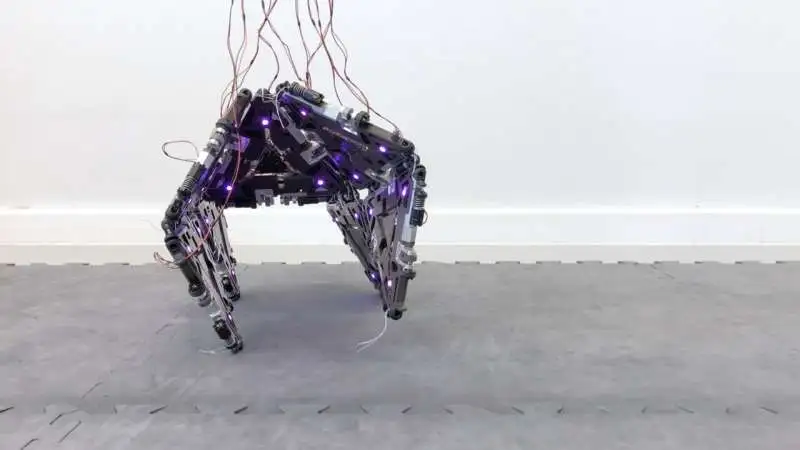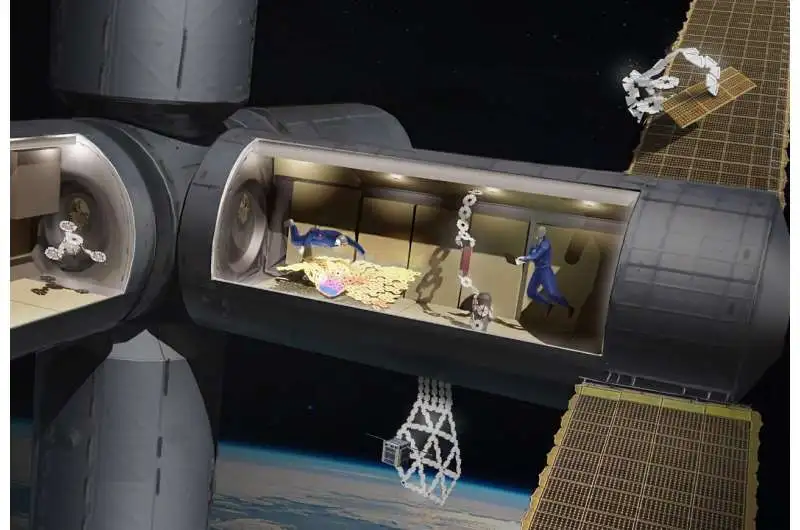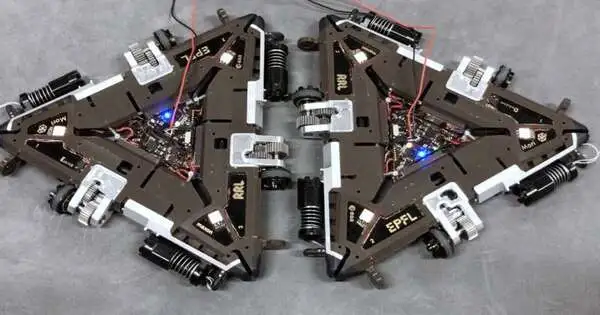The Mori3 robot is able to transform from two-dimensional triangles into almost any three-dimensional object by drawing inspiration from the digital world of polygon meshing and the biological world of swarm behavior. Modular robotics hold promise for space travel, according to EPFL research that was published in Nature Machine Intelligence.
Jamie Paik, director of the Reconfigurable Robotics Lab, states, “Our aim with Mori3 is to create a modular, origami-like robot that can be assembled and disassembled at will depending on the environment and task at hand.” Mori3 is able to alter its size, shape, and purpose.
A polygon robot
The Mori3 robot’s individual modules are triangular. In a process called “polygon meshing,” the modules simply join together to produce polygons of various sizes and configurations. Christoph Belke, a postdoctoral researcher in robotics, states, “We have demonstrated that polygon meshing is a viable robotic strategy.”
Each module takes on a new shape. Credit: EPF RRL
had to push the boundaries of mechanical and electronic design, engineering, computer systems, and robotics in order to accomplish this.
Belke explains, “We had to rethink the way we understand robotics.” These robots have the ability to change their own shape, attach to each other, communicate with one another, and reconfigure to form structures that can move and talk.
Mori3 robots are good at doing the three things that robots should be able to do, making this proof of concept successful: moving around, handling and transporting things, and interacting with other people are all included.

Mori, in a quadrupedal configuration, moves. Credit: Space-bound EPFL RRL:
Destined for space
What advantages do modular and multifunctional robots offer? According to Paik, “robots need to be able to change their shape or configuration in order to perform a wide range of tasks.” “A wide range of applications can be effectively served by polygonal and polymorphic robots that connect to form articulated structures,” she asserts.
“Of course, specialized robots will perform better in some situations than general-purpose robots like Mori3. Nevertheless, Mori3’s greatest selling point is its adaptability.

A rendering of the space travel potential of the Mori 3. Credit: Christoph Belke, Raphaël Galeuchet, EPFL.
Mori3 robots were created in part to be employed in spaceships, which lack the space to keep multiple robots for each particular activity that must be completed. Mori3 robots, according to the researchers, will be employed for communication and external repairs.
More information: Morphological flexibility in robotic systems through physical polygon meshing, Nature Machine Intelligence (2023). DOI: 10.1038/s42256-023-00676-8





